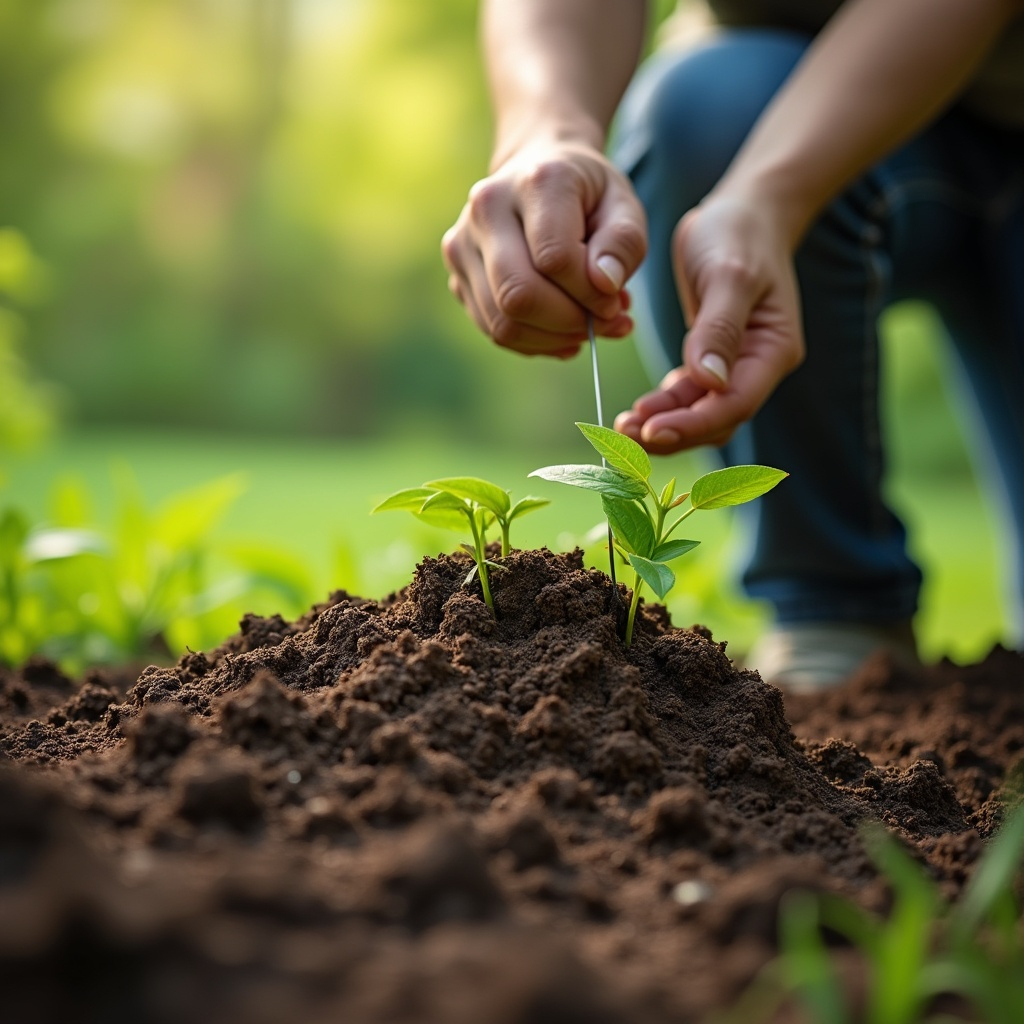Introduction
Spring is the perfect time to refresh your landscape with vibrant flowers, lush shrubs, and beautiful trees. Adding new plants not only enhances curb appeal but also creates focal points and adds value to your property. With careful planning and thoughtful plant selection, you can transform your outdoor space into a colorful and thriving garden. This guide will help you plan and execute the perfect spring planting project while providing tips to keep your plants healthy all season long.
Planning Your Spring Garden
Before heading to the nursery, take time to assess your landscape’s layout and needs. Successful planting begins with careful evaluation and preparation. Consider the following:
- Sunlight: Evaluate which areas receive full sun, partial shade, or full shade. Different plants thrive in varying light conditions, so knowing your landscape’s exposure is crucial.
- Soil Type: Test your soil’s pH and nutrient levels to ensure compatibility with your plants. Sandy soils may require additional organic matter, while clay-heavy soils may benefit from aeration.
- Drainage: Identify areas with poor drainage and improve them as needed. Raised beds or adding organic material can enhance drainage and prevent root rot.
- Planting Schedule: Research the best planting times for your climate zone to give your plants the best start. Early spring planting allows roots to establish before the summer heat arrives.
- Design Planning: Sketch out your garden layout, grouping plants by height, color, and bloom time for a cohesive and visually appealing arrangement.

Top Flower Choices for Spring
Annuals
Annuals provide seasonal color and are ideal for borders, containers, and garden beds. They offer flexibility to change your garden’s look each year.
- Petunias: Bright and versatile, great for sunny areas and containers.
- Marigolds: Easy to grow, pest-resistant, and perfect for sunny spots.
- Impatiens: Perfect for shady spots and container gardens, offering vibrant blooms.
- Begonias: Shade-tolerant with colorful flowers and attractive foliage, ideal for containers and garden beds.
- Zinnias: Vibrant, long-lasting flowers that thrive in full sun.
Perennials
For long-lasting blooms, choose perennials that return year after year. These plants form the backbone of a low-maintenance garden.
- Coneflowers: Drought-tolerant and attract pollinators like butterflies and bees.
- Daylilies: Low-maintenance and available in many colors for continuous blooms.
- Black-eyed Susans: Hardy and cheerful flowers that bloom through summer.
- Hostas: Great for shady areas, offering lush foliage and seasonal blooms.
- Lavender: Aromatic and deer-resistant, ideal for borders and pathways.
Shrubs to Add Structure and Texture
Shrubs create texture, structure, and year-round interest in the garden. They can define spaces and act as natural dividers.
Flowering Shrubs
- Azaleas: Bright spring blooms and easy to maintain, perfect for mass plantings.
- Knockout Roses: Low-maintenance and continuous bloomers, adding vibrant color throughout the season.
- Hydrangeas: Large, colorful blooms that thrive in partial shade. Varieties like panicle and oakleaf hydrangeas offer different forms and colors.
- Forsythias: Early bloomers with bright yellow flowers, signaling the arrival of spring.
Evergreen Shrubs
- Boxwoods: Excellent for hedges and foundation plantings, providing structure year-round.
- Hollies: Provide year-round greenery and winter berries, attracting birds.
- Junipers: Drought-tolerant and versatile for various designs, including ground covers and topiaries.
- Rhododendrons: Stunning blooms and evergreen leaves, suitable for shady spots.
Preparing the Soil
Healthy soil is the foundation for a thriving landscape. Proper soil preparation can mean the difference between a flourishing garden and one that struggles to grow. Follow these steps:
- Test Soil pH and Nutrients: Use a soil test kit to determine pH levels and amend as necessary. Neutral to slightly acidic soil often works best for most plants.
- Add Compost or Fertilizer: Enrich the soil with organic matter like compost or aged manure to boost plant growth. Incorporate balanced fertilizers for specific plant types.
- Apply Mulch: Spread mulch around plants to retain moisture, regulate temperature, and prevent weeds. Organic mulches like wood chips or bark decompose over time, improving soil structure.
- Aerate Soil: Loosen compacted soil with a garden fork or aerator to improve root growth and water absorption.
- Layer Soil Amendments: For raised beds, layer compost, topsoil, and organic matter to create a nutrient-rich base for planting.

Maintenance Tips
Keep your new plants healthy and thriving with proper care. Regular maintenance ensures your garden remains beautiful and productive throughout the season.
- Watering: Water deeply and consistently, especially for young plants. Early morning watering reduces evaporation and fungal issues.
- Pest and Disease Prevention: Inspect plants regularly for signs of pests or diseases. Use natural remedies like neem oil or introduce beneficial insects.
- Mulching and Pruning: Refresh mulch as needed to maintain moisture and weed control. Prune shrubs and perennials to shape and encourage growth.
- Weed Control: Regularly remove weeds to reduce competition for nutrients and water.
- Fertilizing: Feed plants periodically based on their needs, using slow-release fertilizers for steady nourishment.
- Staking and Support: Provide stakes or trellises for tall plants to prevent bending or breaking in wind and rain.
Conclusion
Spring planting is a rewarding way to brighten your landscape and prepare for the growing season. By carefully planning, selecting the right plants, and maintaining healthy soil, you can create a vibrant and inviting outdoor space. Whether you’re planting colorful flowers, textured shrubs, or structural trees, this guide has the tips you need for success.
For professional assistance with design and installation, contact our landscaping team today and let us help you bring your vision to life!

Pingback: Front yard Landscape Design Secrets